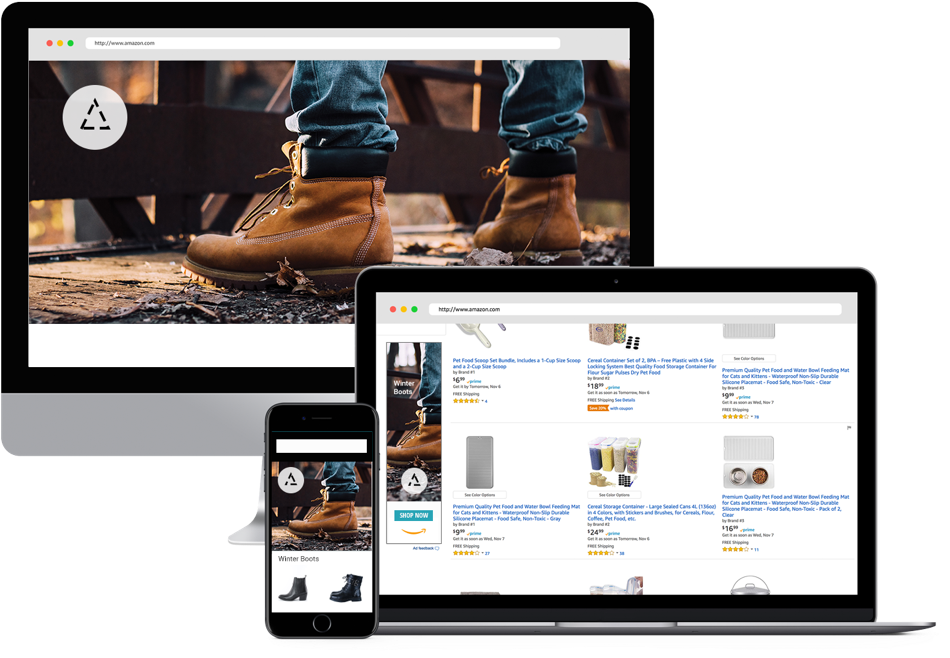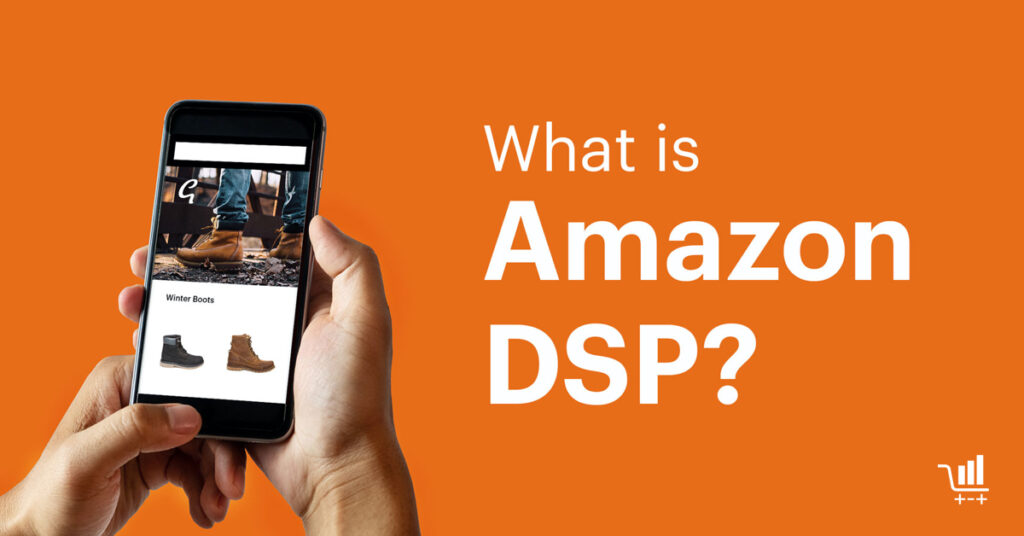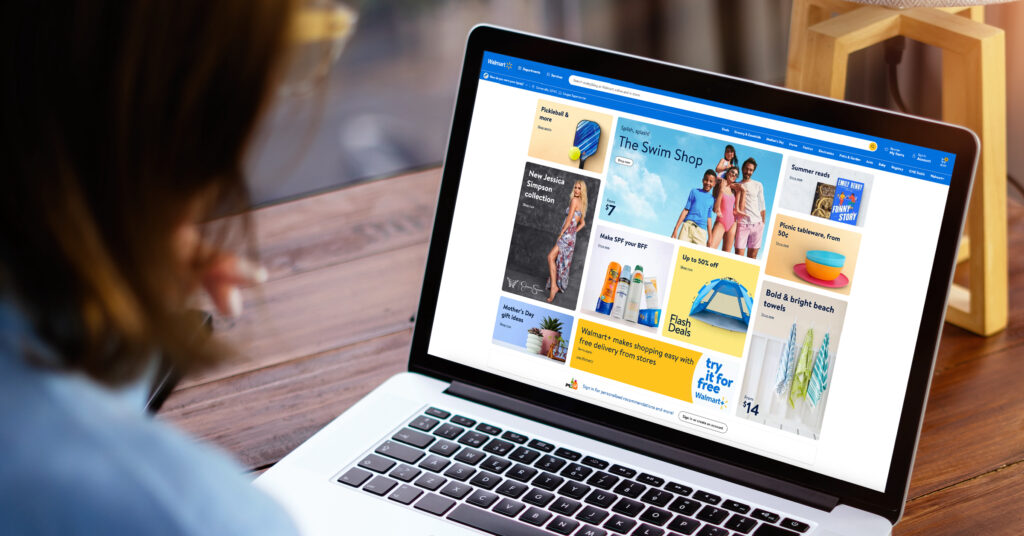Over the last 10+ years, the number of marketplace sellers across Amazon has skyrocketed. Gone are the wild-west days of the marketplace, when you could just throw something up and easily sell it. With over 5 million sellers currently on the platform, it’s becoming more and more difficult for brands to stand out – even with the demand of online shoppers.
On average it can take 5 to 9 impressions before a consumer clicks on an ad, let alone converts. So with all the noise and increased competition, how are you going to re-engage potential customers? Or actively court in-market consumers you can’t reach on an Amazon SERP?
There is another way. The Amazon demand side platform (also known as DSP) allows you to create more brand awareness and re-engage with customers off Amazon. Via Amazon DSP management and effective DSP strategy, you can keep your brand messaging consistent with a full-funnel strategy that facilitates more sales.
Before we dive into how Amazon DSP works, think about your own search behavior and how many ads you see on the daily – hundreds, perhaps even thousands. Whether you are searching for a show, reading an article, or looking for a place to eat, a video or banner is bound to show up. While Amazon’s demand-side platform is a fantastic way to re-target your customers and create brand awareness, it’s important to note that many of your target audience may not be in the buyer mindset. However, creating brand awareness and recognition is an imperative part of your marketing mix. It’s a strategy that needs to be played out as a long game, and that’s the approach you should take as you look at tapping into Amazon DSP advertising.
→ Prefer to learn about Amazon DSP by watching a video? We’ve got you covered with our replay of The Keys To Success For Amazon Demand Side Platform
So, What is Amazon DSP?
Unlike PPC advertising, DSP (Amazon’s demand-side platform) is designated to create product and brand awareness outside of Amazon’s platform and community – extending reach to those that may not always purchase from the behemoth or may not be notably in the buyer mind frame.
Such ads can be found in many different forms, including mobile banner ads, mobile interstitial ads, desktop display ads, in-stream video ads, image and text ads, and other formats. The value of these Amazon ad solutions is that sellers and vendors can retarget potential customers beyond the Amazon platform.
How Do Amazon PPC and DSP Advertising Models Differ?
Unlike with PPC, Amazon DSP management allows you as the seller to do the following:
- Cross-market and sell complementary products to site visitors or previous customers.
- Re-engage people who have visited your site to increase brand awareness.
- Educate/provide awareness to previous shoppers regarding new products they may like.
- Remind previous customers when they’ll need to repurchase your product or of any special/limited/seasonal deals coming up.
Another huge difference is the price model between PPC and DSP.
Sponsored Products, Sponsored Brands, and Sponsored Display each follow a pay-per-click (PPC) pricing structure. As a result, advertisers are only charged when a shopper clicks on that ad.
This contrasts with a cost-per-thousand-impressions (CPM) model, which is common for Programmatic and Display (DSP) media buys.
How Amazon DSP Metrics Work for Bidding?
To serve ads to shoppers, advertisers must compete in an auction by compiling a list of relevant keywords and product targets and submitting bids at the target level. The bid represents the maximum amount an advertiser is willing to pay for a click on the associated ad.
However, the bid amount does not always amount to the price you end up paying for the click. The CPC is ultimately decided in the auction and is often less than the stated bid. A DSP is a piece of software used to automate the purchase of advertising. It enables the purchase of display, video, or other types of ads across many website placements.

Amazon’s Demand-Side Platform is one of many DSP solutions. It has its own unique features, but the most important distinguishing characteristic is access to the wealth of Amazon’s first-party consumer data to drive targeting. Brands can utilize this data to tap into audiences with known shopping behaviors.
Amazon DSP enables brands to reach Amazon shoppers with targeted ads both on and off the Amazon site. Ads can link to your brand’s Amazon storefront, individual PDPs (product detail pages), or other web pages (including your own D2C site). It supports programmatic ad buying across thousands of sites as well as a wealth of targeting options supported by Amazon’s first-party shopper data.
How Is Amazon DSP Different from Sponsored Products and Brands?
Crucially, Amazon Demand-Side Platform is audience-based, not search term/keyword based. On Amazon, search — organic, Sponsored Products, and Sponsored Brands — is reactive to search terms that customers are looking for, whereas DSP is an audience-based, proactive targeting approach that uses Amazon’s data to understand customer behavior.
Amazon DSP is the only platform where we can track consumer behavior from start to finish of a transaction, meaning we know how people are searching, researching, and the exact product they end up buying. It also looks back 12 months to understand this search behavior, and pulls people into different audiences, because one size doesn’t fit all.
Is Amazon DSP a Good Opportunity For Amazon Sellers and Vendors?
DSP is a great tool for both retargeting and audience-building. Retargeting, or shopper reengagement, serves ads to shoppers who have already viewed or purchased your products.
In the case where the shopper has already viewed a product, maybe having spent time digging into the reviews, the ad serves as a reminder that they had expressed interest in the product and calls them back to look at it again for another chance to convert.
Re Engagement also works for shoppers who have previously purchased your brand, drawing their attention back to other offerings. If they’ve purchased one item from the catalog, they may also be interested in a complementary product or a newly launched product from your brand.
Conversely, the Amazon Demand-Side Platform program can also be used to expand your reach to new shoppers. For businesses whose growth has plateaued, they can deploy Amazon DSP to expand their reach to net new customers and reignite growth by generating new demand. If PPC pulls customers in on the Amazon SERP, DSP pushes them in. In a way, it’s like an ex texting you late at night to remind you how much you miss her.
Amazon DSP Glossary:
|
Audience-based targeting – targets ads based on shopper behavior (as opposed to search terms entered) CPM (cost per mille) – ads for which brand pays cost per thousand impressions, applies to Amazon DSP DSP (demand-side platform) – software that automates ad purchasing across the web In-market targeting (also known as interest category marketing) – drives consideration among shoppers who are “in-market” to purchase a particular type of good or service PDP (product detail page) – Amazon page describing and depicting the product for sale PPC (pay-per-click) – ads for which brand pays only if the customer clicks on the ad, on Amazon PPC options are Sponsored Products and Sponsored Brands Retargeting – ad type that targets shoppers who have previously viewed or purchased a product |
How To Use DSP?

For Amazon sellers, DSP should be part of a full-funnel strategy. Sponsored Products and Sponsored Brands are lower on the advertising funnel – capturing consumers late in their purchase journey, whereas DSP is higher in the funnel, working more for brand awareness than for high conversion rates.
Amazon DSP represents an excellent opportunity for expansion when a brand is hitting the point of diminishing returns with PPC. A good rule of thumb is if a business is spending more than about $10k in ad spend on search and achieving its goals, it’s a good time to try DSP. This is in part because Amazon does have a $35k minimum (over two months) to use DSP, although brands who work with Teikametrics enjoy some flexibility on this.
We recommend an always-on approach to retargeting. This way, your ads are nudging customers who’ve abandoned a cart or spent time on the PDP but have not made a purchase, as well as reaching previous customers with a new product, upsell, or cross-sell.
Also consider brand awareness plays. Target audiences that show an interest in purchasing certain kinds of products, audiences currently “in aisle” (viewing a specific product), lookalike audiences (shoppers who look similar to those who’ve purchased from your brand), or audiences browsing products similar to the ones you’re marketing.
When assessing the performance of these ads, remember their role within the marketing funnel. Ads whose purpose is brand awareness should drive increased detail page view rates, but if they’re appearing off of Amazon they’re going to raise brand recognition so that the customer is more likely to make the purchase when they’re back on Amazon. Remarketing should drive increased conversion rates.
Measure performance with an eye to total return on ad spend (TROAS), but also look at metrics like detail page view rate and net new audience size.
Tips For Success When Using Amazon Demand Side Platform
As you prepare to test out Amazon DSP it helps to keep in mind a few tactical considerations that may be different from dealing with other ad types.
First of all, don’t skimp on the creative. The DSP ad format is all about the opportunity to deliver a rich brand experience through visuals, video, and memorable text. To take full advantage of this opportunity, invest in thoughtful design and creative development.
Also, be aware that utilizing DSP will require an increase in budget beyond what your business has allocated for PPC. Display ads need to be given a healthy budget, allowing sufficient spend to see success. The reason Amazon has the $35k minimum is that they tested smaller budgets and found that a generous budget is really required for brands to see success with these ads.
Although there is some flexibility in the budget when you partner with Teikametrics to manage your Amazon DSP account, we do recommend dedicating a solid budget and running at least a two-month test to allow time to ramp up, make any needed adjustments, and really understand how the ads are performing.
Key Takeaways on How To Use Amazon DSP
- What distinguishes Amazon DSP from similar display ad solutions outside of Amazon is its wealth of first-party consumer data. This enables sophisticated custom audience targeting
- Use Amazon Demand-Side Platform for retargeting both on and off Amazon to re engage shoppers
- Furthermore, use Amazon DSP to develop brand awareness using in-market targeting
- Evaluate Amazon’s DSP performance with an understanding of its place at the top of the funnel in a full advertising strategy
- Partner with Teikametrics to leverage data across each ad type and use it to meet business goals, improve spend efficiency, capture and create demand at the lowest possible cost.
Want to learn more about our technology and services? Let’s talk.




